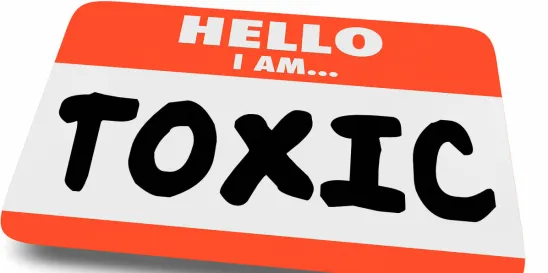Last month, the California Office of Environmental Health Hazard Assessment (OEHHA) issued a Notice of Proposed Rulemaking and Announcement of Public Hearing (“Notice of Proposed Rulemaking”) concerning proposed changes to existing sections of the safe harbor warning regulations for consumer products exposures. OEHHA is the lead agency that implements Proposition 65 (“Prop 65”), which requires businesses to provide a “clear and reasonable” warning before they knowingly and intentionally cause an exposure to a chemical listed as known to the state of California to cause cancer or reproductive toxicity. OEHHA has also adopted certain regulations detailing language and methods that are considered “safe harbor” language that businesses can use to comply with Prop 65.
If the proposed changes are enacted, OEHHA would not only significantly change the information required on its short-form warning, but it would also add new sections to the safe harbor warning regulations and expand safe harbor warnings for passenger or off-highway motor vehicle parts exposures and recreational marine vessel parts exposures.
Key Changes Included in the 2023 Proposal
- Identification of chemicals on short-form warnings. OEHHA indicates that a central purpose behind the amendments to the short-form is to increase clarity to consumers and prevent unintended uses of the short-form warning by requiring a specific chemical to be identified in the short-form warning. This change is consistent with OEHHA’s recent effort to amend the short-form safe harbor language in 2021. However, at the time, OEHHA was not able to complete the amendment process in the 1-year time frame from the date of the notice and allowed the proposal to lapse, noting its intention to restart the process with the benefit of the information received during the 2021 comment period. If adopted, the 2023 revision to the short-form safe harbor language will create a significant overhaul of the current regulatory structure concerning businesses’ present use of the short-form warnings and will likely require many businesses to evaluate and revise their policies and procedures for its use of such warnings. The proposed revisions also include changes to the font size requirement of short-form warnings on certain consumer products and explicitly note that short-form warnings can be used as a safe harbor warning for food products.
- Warnings for passenger or off-highway motor vehicle and recreational marine vessel parts exposures. OEHHA also intends to significantly revise the current requirements for manufacturers and retailers of passenger or off-highway motor vehicle and recreational marine vessel parts (“Auto Parts”). Notably, the proposal adds four new sections for a new option for a general warning for potential exposure to listed chemicals combined with a recommendation that the consumer practice good industrial hygiene. This is a significant opportunity for companies in the Auto Parts space as OEHHA notes in the Initial Statement of Reasons that manufacturers of “passenger or off-highway motor vehicle and recreational marine vessel replacement parts number in the tens of thousands and are manufactured all over the world. A retail seller may carry hundreds of individual parts, a large number of which may require a Proposition 65 warning.” The proposed revisions include an option for retail sellers to put up a general warning on signs in the vicinity of the retail point of sale or display of the Auto Parts. In addition, the language of the safe harbor would include chemical substances, so that parties would not need to test (and retest) every part to confirm the chemical substances present therein. The proposed safe harbor language for vehicle Auto Parts is as follows:
- [Symbol] CALIFORNIA WARNING: Handling passenger or off-highway motor vehicle parts can expose you to chemicals such as phthalates and lead, which can cause cancer and reproductive harm. To minimize exposure, service the vehicle in a well-ventilated area, wear gloves, and wash your hands. For more information, see www.P65Warnings.ca.gov/motor-vehicle-parts.
- Short-form warning explicitly permissible for food products. When OEHHA adopted the short-form warnings for consumer products, the regulations did not explicitly include a similar short-form warning option for food products. The proposed regulation clarifies that a short-form warning can be used for food. It would require the same structure as the proposed short-form for products, but would still not require the triangle and exclamation mark.
- Clarification on warnings for products purchased on the internet or through a catalog. The proposed revisions affect how a warning is provided to consumers prior to an online purchase and on the product ordered online. Currently, businesses are only required to have a warning on the internet listing the product and in a catalog for a direct purchase. OEHHA is proposing to expand the requirements for businesses that sell certain products via catalogs – including warnings provided in the catalog, on the product when delivered to the consumer, and may also require the warning be provided on the internet. OEHHA’s proposal would also require products purchased on the internet to have a warning on or with the product itself. For internet warnings, businesses would also have additional options for hyperlinks using signal words “CA WARNING” or “CALIFORNIA WARNING.”
- Other proposed revisions to consumer product safe harbor warnings. The proposed revisions to the short-form warning also add additional options for signal words –including permitting the use of “CA WARNING” and “CALIFORNIA WARNING” in addition to the word “WARNING” – for such warnings.
Ambiguity Concerning “Prominently Displayed” Warnings
The proposed revisions also include a seemingly benign amendment to Section 25601(c), which states that “[c]onsumer product exposure warnings must be prominently displayed on a label, labeling, or sign, and must be displayed with such conspicuousness as compared with other words, statements, designs or devices on the label, labeling, or sign, as to render the warning likely to be read and understood by an ordinary individual under customary conditions of purchase or use.”
However, by adding “[n]otwithstanding any other provision in this subarticle” to this section, OEHHA has created ambiguity and a lack of clarity as to whether adherence to any particular subsection could nonetheless be deemed insufficient and that the warning provided is not “prominently displayed.” OEHHA notes that the goal of the change is to incentivize the “prominent display” of the warning even if other label information is small and hard to see, but this is a change to historic expectations that putting it on the label was sufficiently “prominent” for purposes of compliance with the warning requirements. This will likely raise additional challenges for businesses that seek to comply with Article 6 consumer safe harbor warning requirements.
Closing Thoughts
OEHHA has been signaling some of these changes for several years but has gotten mired down in comments and timelines that have ended recent efforts at revision. We anticipate that industry groups and parties are likely to submit numerous comments on these proposed rules, and it is too early to tell if OEHHA will be able to move them through the regulatory process quickly enough to finalize them.
OEHHA has scheduled a hybrid (both in-person and virtual) public hearing on December 13, 2023, at 10:00 am (PST) to receive comments about this action. Any interested person or their authorized representative may submit written comments relevant to the proposed regulatory action. Written comments must be received by OEHHA by Wednesday, December 20, 2023. For additional information on the proposed rule, or for assistance in engaging with OEHHA with respect to the proposed rule, including submission of comments, please contact Sarah Slack, Erik Swanholt, or Laura Moedano.






 />i
/>i
